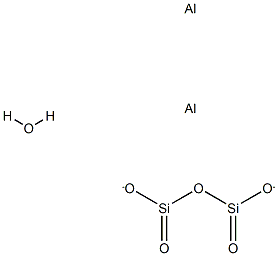Chemical Properties
gray, greenish, reddish, or bluish; hardness 7–7.5; used in dental cements and the glass industry, in enamels, ceramics, and as a paint filler [MER06] [HAW93]
Physical properties
Habit: acicular, blocky, prismatic, euhedral crystals.
Color: usually pink, white, rose, dark
green, gray, brown, red, or green or with clouded inclusions.
Luster: vitreous (i.e., glassy).
Diaphaneity: transparent to translucent.
Cleavage: (110) distinct, (100) indistinct, (010)
poor.
Fracture: uneven, splintery, brittle.
Streak: white.
Chemical: insoluble in strong
mineral acids but attacked by molten alkali-metal hydroxides (e.g., NaOH) and carbonates
(e.g., Na2CO3). Heated in Co(NO3
)2 give the Thénard blue color. Non fusible but transforms
to sillimanite on heating.
Other properties: Unfusible but when heated above 1200°C
transforms to a mixture of silica and mullite (Al6Si2O13). Dielectric constant of 8.28.
Diamagnetic with a specific magnetic susceptibility of –10
–10 m
3.kg
–1.
Occurrence: metamorphosed peri-aluminous sedimetary rocks.
Production Methods
It was estimated that in 1987, 90% of the kyanite produced in
the United States was used in refractories, 55% of this for
smelting and processing iron, 20% for smelting and processing
nonferrous metals, and15% for refractories in glassmaking
and ceramics.
